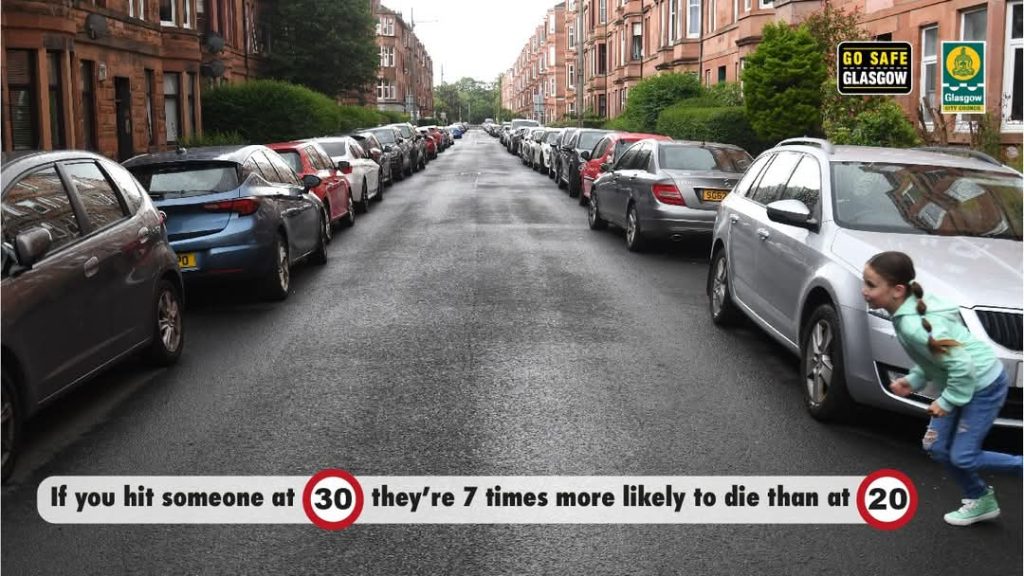>>>> Work in progress – To Edit….

The Mind Driving Answer To This Conundrum – DON’T HIT THEM!
| SPEED KILLS MINDSET versus MIND DRIVING MINDSET | |
| Speeds Kills | Poor Driving Kills – Better Driving Saves Lives |
| Don’t break arbitrary numerical speed limits | Minimise risk of collisions, defined as |
| Simplistic / Views speed in isolation to Surprise and Space in the infinitely variable number of situations faced | Nuanced / realistic. Sees Speed in relation to Surprise and Space |
| Numerical Speed / Illegal or Inappropriate Speed in terms of arbitrarily set speed limits | Safe Speed / Appropriate for the road situation |
| Drivers direct attention to speedometer out of fear of being caught speeding | Drivers scan the road ahead for danger and drive at a safe speed intuitively with regard to surprise and space |
| Emphasis of Hands and Feet skills | Emphasis on Eye and Brain (plus Hands and Feet) skills |
| Emphasis on the Highway Code and compliance with Rules | Emphasis on processing information to minimise risk |
| Punish after the event | Prevent before the event |
| Doing what’s easy | Doing what’s right |
| Wasteful (Doing the wrong things) | Best use of scarce resources. Doing the right things |
| Poundshop policing / Policing by fear and coercion | Proper policing / Policing by consent |
| Emphasis on enforcement / compliance | Emphasis on driver judgement achieved through better education and training / aspiration and willing co-operation |
| Riddled with waste (John Seddon) | Value Work / little administration |
| Punish drivers who exceed arbitrary numerical speed limits | Train and encourage drivers to take personal responsibility for driving at a safe speeds which minimise risk to themselves and others through collisions |
| Extrinsic Motivation (McGregor’s Theory X) | Intrinsic Motivation (McGregor’s Theory Y) |
| Reductionist / focuses solely on speed | Whole System / focuses on speed in relation to surprise and space |
| Focus on fearful compliance and punishment | Focus on natural human values, not to harm self and others |
| Lose / Lose & Lose Win thinking | Win / Win thinking |
| System Doing To | System Doing With |
| Technology led (Speed Cameras) | Human led. Training for better driving |
| Speed Awareness Courses for compliance | Mid Driving Courses for skills improvement |
| Disengaging and remote (current zeitgeist) | Engaging and personal with incorporation of discretion |
| Alienation and resentment | Supporting and encouraging |
| One driving test | Lifelong learning and retraining |
| Breeds resentment in driver caught being human / doing their best / undermines the law | Breeds gratitude /encourages support for the law |
| Doesn’t make for better drivers | Does make for better drivers |
| Quick Fix thinking | Long term thinking |
| Uses technocratic enforcement | Personalised and humane |
| Resisted and disliked | Accepted and welcomed |
| Officers having to justify their activity in a way that they never have to do for other offences | No need to justify their activity |
| Admin waste | All value work |
| Learning to Drive (Hand and Feet) | Coaching to drive better (eye and brain |
| No emphasis on risk | Risk management |
| Noi discretion | Discretion |
| No night school / group learning | Group learning cohorts |
| Lees simulators | More simulators |
| Accountants mentality | Entrepreneurs mentality |
| Pessimistic | Hopeful / Optimistic |
| Facile and unsophisticated. Blunt instrument. One size fits all | Sophisticated / systemic and nuanced |
| Betrays a superficial understanding of what causes crashes and how to reduce them | Continuous learning |
| Product of Civil Service / Road Safety Industrial Complex organisational groupthink | Product of Stephen Haley (Real people, real drivers, real driving instructors’insights) |
| Messy Objectives including aspects irrelevant to safety eg climate change | Clear Objectives all focussed on road safety |
| Soundbite virtue signalling (Vision Zero) | Hard graft |
| One size fits all enforcement | Appropriate enforcement focussed on those that most need punishing / taking off the road including with bad attitudes |